| External bark damage is caused by
mainly boring weevils, feeding on the bark of the trunk
or twigs, leaving small holes or otherwise irregular
wounds (bark scoring). Females of cicadas, tree
hoppers or saw flies slit the bark and some jewel beetles
and longicorn beetles chew small pits into the bark for
oviposition (oviposition damage). Insects with
piercing-sucking mouthparts can cause damage similar to
the stippling damage of a leaf, causing a twig or shoot
to wilt (feeding puncture). Oviposition and
feeding by particular insects can cause galls on
the stem and shoot. |
| Internal bark feeding usually affects the
phloem and is caused for instance by larvae of bark
beetles and pin- and shot-hole borers, that tunnel under
the bark (phloem boring, under-bark boring and
bark beetle damage). |
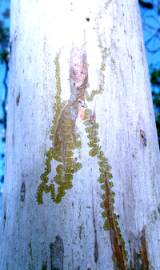 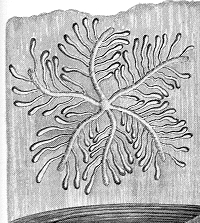 |
| Wood boring can affect the wood and/or the
phloem of the trunk, branches or shoots (terminal
boring and shoot boring,). Many Scolytidae and
Platypodidae beetles are wood borers. The smaller
larvae affect the softer tissues such as the phloem, but
the bigger the larvae grow, the deeper they might tunnel
into the wood. Ambrosia beetle damage is caused by
the adults of these two families, boring small
pin-holes or larger shot-holes through the
bark right into the wood of living or dying trees and
freshly cut lumber. Characteristic of this sort of damage
is that there are no galleries under the bark and that
the bore holes are kept free from saw dust. Furthermore,
the holes are often stained by fungi like blue stain or
affected by heart rot. Powderpost beetle damage is
conspicuous due to the very fine, powder-like saw dust
pushed out of the galleries made in trees and timber
products. Termites (Isoptera) as well as some
beetles like larval longicorn beetles (Cerambycidae)
and weevils (Curculionidae) make irregular,
interconnecting galleries in the heartwood and under the
bark of living and dead trees and in timber products.
Carpenter ants (Anthophoridae) are responsible for
‘honeycomb’ type wood boring. A ‘pipe’
is a big cavity excavated for the establishment of a
termite nest. |
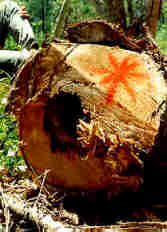 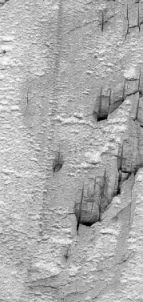 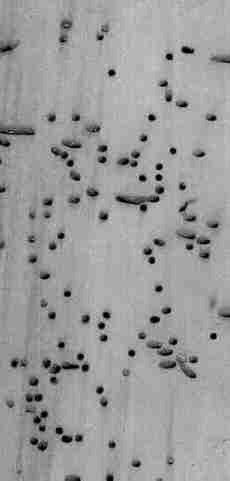 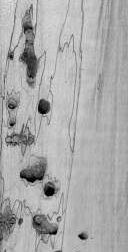 |
| Reactions of a plant to wounds indicate damage
caused by insects. Sap and gum flow on the
bark of a tree can be the result of insects like cicadas,
pin- and shot-hole borers or bark beetles, damaging the
bark, cambium or phloem. Sometimes a wound caused by
insects results in the growth of a twig gall, an abnormal
wood grain or crippled, malformed stems. |
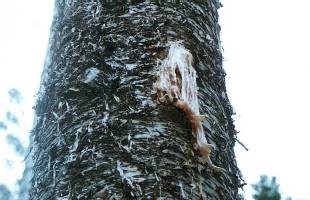
|




